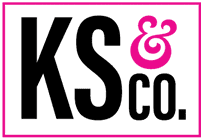This week we chatted with Taina Pereenniemi, a business strategy coach with a loaded background in corporate strategy and business organization.
Here Taina will be discussing the ins and outs of business management systems, and her personal favourite: Notion. By the end of this talk, you will be knowledgeable on the vital business tools that every entrepreneur needs, the common misconceptions around these systems, the best of popular management tools, and how to get started with them.
Taina Pereenniemi helps entrepreneurs streamline their workload with personalized business management systems on Notion. This can be anything from tasks, projects, and processes to customers, teams, documents, and beyond.
In her work, she draws from 10+ years of experience with corporate strategy, project management, and processes and her love for using technology to organize and streamline work and processes. When she’s not nerding out with Notion or streamlining workflows, you can find Taina playing with her two small children or practicing yoga.
—
Systems are important
Systems are vital when it comes to keeping your business organized, running smoothly, and successful. Implementing systems into your business can make all the difference, and help solve some common organizational mistakes in the growth of entrepreneur businesses.
Let’s start, first, by taking a look at some of the most common signs that I tend to see in entrepreneurs when they are missing those critical systems within their business.
Firstly, their ideas, tasks, and projects are scattered everywhere, between sites, people, and places. This can cause many organizational issues; it is hard to find what you need when you don’t know where it was kept, as well as, transferring these tasks or information between sites or sharing it with your team members can become hard when it is not all in the same place.
Another issue that I see when people don’t have the necessary systems, is that they are keeping way too many things in their heads. When you are trying to manage and remember all these tasks, due dates, and pieces of information in your head, it eats up a lot of your mental capacity to do a higher level of thinking, and be the CEO of your business.
Another issue I often see is that they are not consistently managing their leads in their sales pipeline or their client information for their existing clients, and this is obviously not just messy but also causes lost revenue.
When you have a system; a place where you have all your data, all your team members, and all your tasks in one place, you can sit down every day and know exactly what needs to be done, and have all the information to do so at your fingertips. It creates a comforting tunnel vision that can help keep your stress at bay. When everything is everywhere, and you can’t see it from a bigger perspective, it can cause a lot of unnecessary stress.
Overall, I would say that if you are feeling overwhelmed and chaotic in your business, that is a clear sign that you should be doing something to improve your systems.
That’s just not the way things should be, and there is a better way.
Types of Systems
So far we have been talking about systems in a pretty general sense, so now we are going to dive into the different types of systems.
Generally, there are three types of systems we need to consider when systemizing and organizing our business.
First of all, there are management systems, so these are for systemizing and streamlining all the activities related to leading, and governing your business. Examples of this could be setting goals, strategizing around what’s coming in the next months or years, or even team leadership if you are a team leader.
Then there are the operating systems you need to have in place. These are all about the core business functions that deliver value to your customers. Examples of this could be your lead generation, your sales, managing order fulfillment, or the actual service delivery.
Lastly, there are supporting systems. These are the systems that make all the other activities in your business possible. Examples of this could be accounting, hiring, or training security.
Every business’s needs when it comes to systems are unique. But one thing is for sure, every business at every stage needs to have systems of each of the three types to make sure that the business is running smoothly at every level of its functioning.
Misconceptions
Now that we have discussed the different types of systems, I’d like to talk a bit about the common misconceptions that often hold business owners back from systemizing properly.
The first misconception is that when it comes to growth, you need to move fast, and not worry about being messy. Although moving fast and pushing off an organization is not necessarily a bad thing when you are trying to grow your business rapidly, being organized is always a good idea.
There is such a thing as moving too fast, and there is such a thing as keeping things too messy. So if you ignore systemizing while growing, it will at some point bite you in the back.
It’s much easier to start building structure in your business from the start instead of having a huge mess accumulate over years and having to deal with it afterwards.
If you lack a sufficient level of organization in your business, it will slow you down instead of allowing you to move faster, you will be less efficient. You will have inconsistent client experience, you will have an impaired ability to delegate to others, etc.
Another common misconception I’ve heard is: “When I have too many things on my plate, I can just hire more team members to help”. Hiring without having sufficient systems in place will make not just you, but also the team members inefficient. So it’s a waste of resources.
Even if you hire the best people, they still rely on you to bring them clarity on what they need to do and where they need to focus. So if you don’t have systems to manage all the delegated task-related documents, your processes, or standard operating procedure, Your team will be inefficient. You will spend a huge amount of your time coordinating messages and trying to find the relevant information for the task.
The third misconception I wanted to speak about relates to the issue that there are hundreds of different tools to set up for different purposes, and we often don’t know where to start when it comes to choosing systems. But let me say a few encouraging words here: Simple work management tools or project management tools are usually enough for systemizing most things in our business.
Some tools work best for the super detailed areas of your business; these can be.
Excellent when you want to have some advanced functionalities when you want to optimize specific workflows and get it right. However, almost any kind of work, any kind of information can be organized in one streamlined business system using this simple work management.
Oftentimes people try to work with a certain system and fail, but it’s all about setting up your system in a way that fits your specific business needs and training your team members properly on how to use it. You need A proper amount of change management to get them on board by consistently using that tool as intended.
Also, something that is often forgotten is proper data migration. What I mean here is that you make sure that all of the key information you want to be managing in the system is moved there for your system to function to the extent of its capabilities.
Comparing Tools
Now that we have cleared up some of the misconceptions that people have about systems, let’s take a look at some of the most popular work management tools, and go through some tips on how to choose the perfect tool for your business.
There are a lot of options here, let’s take a look at a quick comparison of some of these to get a feel of what we are looking for.
The key components we are looking at are flexibility, automation, views, documents, ease of learning and price.
Now as you can see, my top pick for you guys here is notion. But why?
Notion is extremely flexible in terms of how you can organize stuff, so you can create databases with exactly the kinds of properties you want, you can tweak those around, and you can also make real text documents with images, etc. The price is also almost non-existent.
The only downfalls of Notion are ease of learning and automation. There are a vast amount of different possibilities with Notion, most of which are easy to learn, but others require a bit more digging. But overall it’s a great tool for building custom workspaces to organize any kind of work and information, including documents.
The greatest part of Notion, in my opinion, is that you don’t need a ton of separate tools and systems for your general or niche areas of work. They are all able to be created in one workplace.
Setting Up Notion
The basic setup of Notion, to give you a rundown, is that you have a sidebar where you can create pages. Inside these pages, you can create blocks. These blocks can be text, images, calendars, to-do lists, a panel of more pages, etc. all these blocks are different ways of expressing and displaying your ‘databases’ or your data.
The best way to get started with Notion is to copy templates and paste them into your Notion, then you can tweak the template to fit your specific needs. This allows you to see how other people utilize notion tools you may be unfamiliar with. Kelly will link some basic notion templates that I have created at the end for you to use.
When it comes to communication with other systems, Notion is a breeze. You can import many different file forms into Notion seamlessly. Including TXT, PDF, HTML, CSV, etc.
—
Thank you so much for joining us as we dive into the importance of systems, misconceptions around systems, and some of the possibilities Notion can offer you for systemizing your business all in one place, efficiently.
If you are interested in learning more about how to use Notion, and what it can do for your business, check out Taina at her website for consultations.
Check out our freebies page for more exclusive content from Taina!
Follow Taina on Facebook
Follow Taina on Instagram
Check out Taina on YouTube







